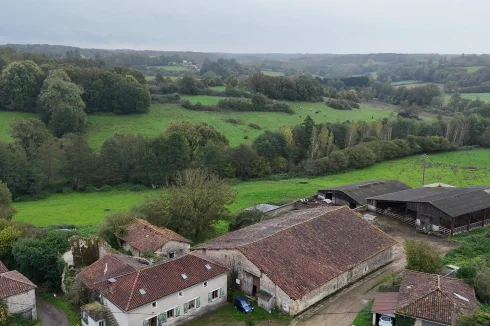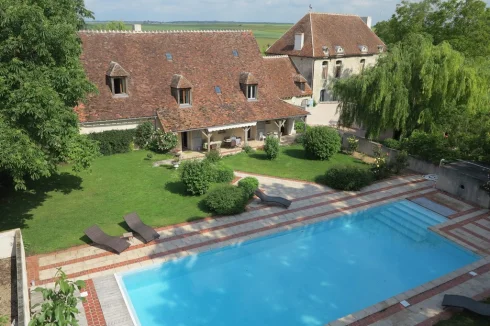Storms in South West France
Tuesday 03 February 2009
We live in Gascony, in the eye of the Cyclone Klaus that tore its way through the South West of France during the weekend of 25th / 26th January.
There has not been a storm quite like it for at least a decade.
Whilst the scale of the human disaster appears to have been less than that of 1999 (the last occasion there was a similar storm) its ferocity appears to have been more severe. The physical damage to buildings, the environment, and communication systems needs to be seen to be believed.
Travelling into the area several days after the storm, I saw thousands of pine trees laid on the ground like giant crayons. It was a quite remarkable scene, something that might only be imaginable from a war zone.
Throughout the South there was serious disruption to public infrastructure services. Several airports were closed, some rail lines still remain closed, whilst for a period heavy lorries were also banned from the highway. In the Aude, the local Préfet banned all traffic from the roads, due to the high winds.
Many schools were also closed for up to a week. For those who did attend schools during the first few days, most needed to be taken by parents, as school buses have not been running.
Whilst there have been fewer deaths than in 1999, there have been some very tragic incidents.
In two separate incidents, two couples died from carbon monoxide poisoning, emanating from a generator they had installed to heat their homes.
An elderly man died from a tile falling off the roof of his house, whilst outside in his garden to inspect the tiles that had fallen off his barn.
A man travelling out in his car to deliver a heater to a neighbour was killed when a tree fell on the vehicle.
With no other means of communications to the outside world, we joined most other people in tuning into Sud-Radio for news, in our case using an old radio we dug out from the attic. Many stations turned over their entire output to receiving calls from worried listeners and eyewitnesses.
Offers of help poured in to the stations from those able to offer heaters, accommodation, or just a hot meal. With over 100,000 households without a fixed line, and with many mobile antennas down, it was a wonder there was anyone able to make a call!
In the first aftermath of the storm, the main priority was the need to clear roads where trees had fallen. With emergency services overwhelmed by the scale of the damage, locals simply took on the challenge themselves, and the sound of chainsaws resonated throughout the countryside.
By midday on Monday morning, there was not a generator, candle, or battery to be found in any shop in the South West, as many remembered how in 1999 they were without electricity for up to three weeks.
With access having been obtained, and most people managing with log fires and candles, the most serious problem that quickly began to emerge was the lack of mains water. With power down, most pumping stations were out of action.
Inevitably, there was a quick run on bottled water in the supermarkets. Many local mayors organised the distribution of bottled water from the mairie. In our own village, the ration has been one bottle a day for each member of the household.
ERDF, the French electricity distributor, in collaboration with the local mairie, also organised the distribution of hundreds of generators to key establishments throughout the country, notably old people's homes and clinics. Some huge 4000KW generators were also later used to provide temporary power to residential areas.
ERDF - Electricité Réseau Distribution France - is a subsidiary of EDF, the French electricity supplier, but due to EU regulations there has had to be some separation of activities. Whilst ERDF manage the low and medium voltage supply, the high voltage system is maintained by RTE - Réseau de Transport d'Electricité - another part of the EDF empire.
Others found their way into local village halls, where the mairies arranged for locals to bring their freezer, and run it from the generator. In our own local village, our neighbouring farmer offered the same service, and we, along with a number of others, took up his kind offer.
Throughout the emergency our local bar has also remained opened, courtesy of a tractor parked up at the back, providing power to run the generator.
Beyond local and communal support the mobilisation of emergency services has been without precedent. ERDF called in engineering teams from throughout France, as well as Germany, Portugal and the UK.
Travelling along the route nationale to Auch each morning I have seen convoys of ERDF vans from other regions of France on their way to the Landes, where 80% of households have been without electricity.
Many of the hundreds of engineers brought into the Landes have been accommodated in a local school, which has been closed for the duration, whilst yet others have been found accommodation in holiday camps.
President Sarkozy also announced the mobilisation of the army in the South West, with a priority to get the water pumping stations in operation.
No reliable estimate is yet available on the financial cost of the disaster, but the insurance companies are bracing themselves for a huge payout in compensation. The storms of 1999 cost them €7 billion. Whilst it seems these most recent storms may well cost less, the geographic boundaries of the storm were also considerably less than was the case ten years ago.
Many who have invested in woodland will need to rely on the government (or the sale of the wood) for compensation, as most insurers do not offer woodland insurance. The price of wood is expected to fall sharply.
ERDF also estimate their own costs of repairing the damage at around €2 billion. Whilst most people now have an electricity supply, it will be several years before the system is properly back to normal. A great deal of the work carried out over the past week or so is of a temporary nature, with some of the huge pylons that have fallen yet to be replaced.
There is also likely to be a continuing debate about the level of investment being made in burying electricity cables underground. Despite the promises made by ERDF following the 1999 storms, critics are already stating that more should have been done since this date to secure supplies in the event of future storms.
In response, ERDF have stated that to put the whole system underground would cost around €60 billion. Last year, around 500 kilometres of the system were buried, at a cost of €500 million. Out of 1.3 million km of lines, around 340,000 km are now underground.
However, whatever progress ERDF make with putting medium voltage cables underground, it seems that this is not going to be possible for the high tension system, whilst cash strapped local councils are the ones who have to pick up the bill for burying low voltage cables.
Ed.
Thank you for showing an interest in our News section.
Our News section is no longer being published although our catalogue of articles remains in place.
If you found our News useful, please have a look at France Insider, our subscription based News service with in-depth analysis, or our authoritative Guides to France.
If you require advice and assistance with the purchase of French property and moving to France, then take a look at the France Insider Property Clinic.





